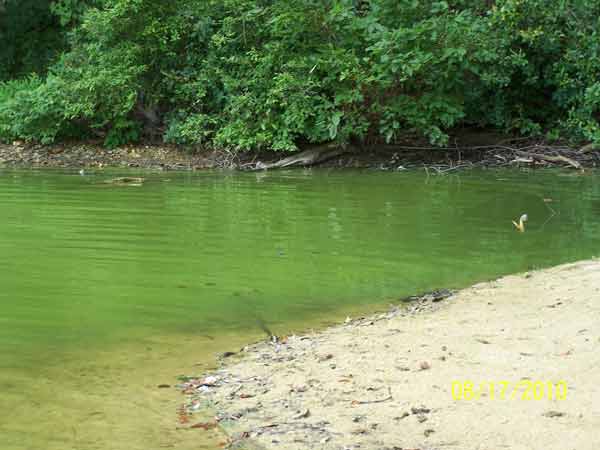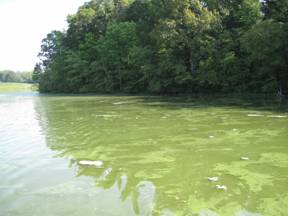|
|
|
This summer there have been water contact advisories due to bluegreen algae and associated toxins on the following water bodies in Maryland:
Cyanobacteria, sometimes called bluegreen algae, are microscopic organisms found naturally in all types of water. Algae blooms usually occur during the sumemr and fall; however, they can occur anytime during the year. Sometimes blue-green algae produce toxins. Swallowing water with algae that are producing toxins can cause serious illness. The World Health Organization suggests avoiding recreational contact above a microcystin (liver toxin) level of 10 ppb. The State of Maryland uses this as a threshold for establishing water contact advisories. To date this year 9 waterbodies have been posted due to high blue-green algae and associated toxins. Above average temperatures and below average rainfall likely made ideal conditions for these algae to bloom. Monitoring and communication of results between counties and the State of Maryland led to quick posting of advisories and no health events were documented. Samples from the upper Transquaking River and Higgens Millpond in Dorchester County continue to have bloom levels of bluegreen algae and microcystin levels above the 10 ppb threshold. Both areas are posted with a no contact water advisory since the end of June. Lake Needwood in Montgomery County was posted on July 9 due to July 8th sample had microcystin 3,590 ppb. Lake Lariat in Calvert County was posted end of June; last samples 8/20 by MDE revealed low algal counts but toxin above 5 ppb at one site- advisory limit is 10; sample is being rerun today) Smithville Lake- in Caroline County was posted on 8/5 due very high levels of Microcystis aeruginosa (850,000 to 970,000 cells/ml). August 16 samples indicated bluegreen levels had dropped substantially (Microcystis counts 0 to 16,000 cells/ml). The lake was resampled on Sept 1 and bluegreens were not significant. Toxin results from MDE confirmed low Microcystin levels on the August 3 date (3.9 ppb in the upper lake and 1.2 ppb at the boat ramp). The county lifted this advisory on September 8.
Williston Lake and Mill Creek in Caroline County (posted on 8/19). First samples revealed 370 ppb microcystin in Mill Creek (this creek receives the overflow from the lake and is a tributary to the Choptank River below Denton). These sites were sampled again Sept 1 and toxin will be run Sept 2;
Fountain Rock Quarry was posted the end of June by Frederick county for XXX and the advisory was lifted August 12. The county treated the lake with Potassium Permanganate to control a bloom of Planktothrix rupescens. A sample taken approximately 08/10 revealed very low cell counts and toxin levels below 1 ppb microcystin. The county will continue to monitor at their discretion.
In the past, the State has largely spread available resources to all areas where restoration is needed. This has generally stabilized water quality or produced small improvement in many areas, but has not reached the point where a specific water body has been declared restored. To address this, the Targeted Watersheds Program is designed to focus efforts in a detailed watershed. The Corsica River Watershed Project was the first pilot program designed to demonstrate that we can successfully restore a Maryland river that drains into the Chesapeake Bay. The end point is to attain the new State water quality standards and remove the Corsica River from the Impaired Waters List. |

